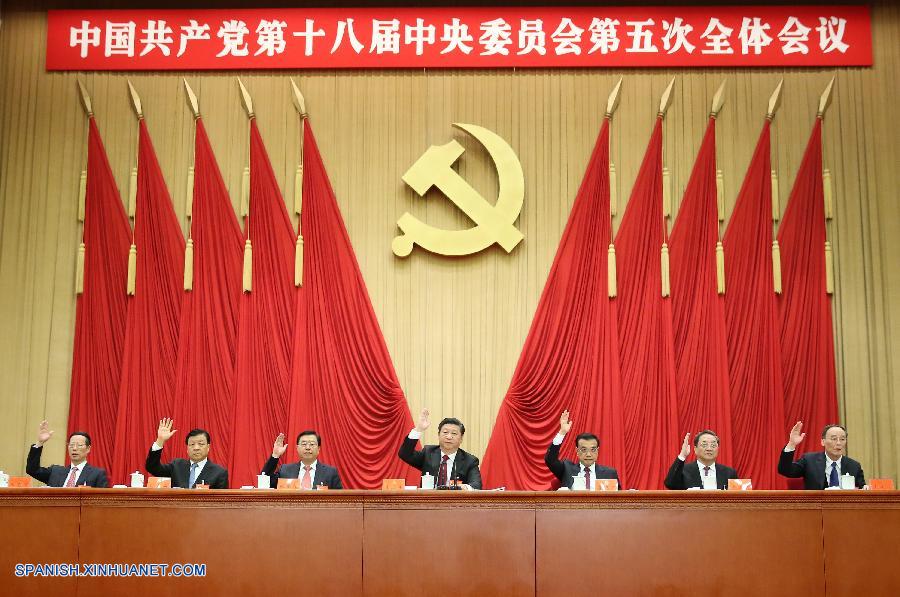
Desde que arrebatou o poder na China, em 1949, o Partido Comunista Chinês assumiu o protagonismo no estabelecimento dos fundamentos do comunismo “a la chinesa” e definiu monocraticamente as estratégias de desenvolvimento e reformas através de metas. Paulatinamente, elas modificaram o perfil da República Popular que, de uma economia maoísta centralizada até 1976, encaminhou-se para a “economia socialista de mercado”, que Deng Xiaoping “neologicamente” cunhou para qualificar o processo de reformas e abertura deslanchado a partir de 1979 na busca de romper o isolamento multissecular do país e inseri-lo no mundo do último quartel do século XX.
Cabe lembrar que neste processo, já a partir de 1953 passaram a ser adotados os chamados “Planos Quinquenais” ( 五年计划 ) para orientar a política econômico-social do país. Naquele primeiro momento, o objetivo era sedimentar os fundamentos marxistas-leninistas, através de paradigmas de crescimento e de reformas que seguiam o modelo soviético. Eles se fundamentaram, basicamente, 1) na propriedade estatal dos setores mais modernos da economia, sobretudo a indústria; 2) na coletivização das grandes unidades agrícolas; e 3) no planejamento econômico centralizado. O grande sonho de Mao – e o pesadelo que gerou – era sua obsessão em transformar um país milenarmente agrário numa potência industrial numa velocidade inconcebível naquele momento, tornando o “Grande Timoneiro” em responsável por uma das maiores tragédias que o país viveu no século passado: a fome que vitimou entre 15 e 55 milhões de indivíduos…jamais se saberá, ao certo, quantos foram….
Desde o início, institucionalmente as políticas adotadas pelo governo têm que ser referendadas pelo Congresso Nacional do Povo, que é o órgão legislativo maior e congrega cerca de três mil membros (eram 2.980, em 2018), tornando-o no maior corpo legislativo do planeta. No intervalo de suas reuniões bianuais, o Comitê Central – o eleito em 2012, tem 205 membros e 171 suplentes – desempenha as tarefas legislativas, comandado, em sua máxima instância pelos 25 lideres que compõem o seu Birô Político. No topo desta escada hierárquica de vários degraus encontram-se o Secretário-Geral do PCC e o Presidente da República, cargos costumeiramente compartilhados pela mesma autoridade, por ora ( e sabe-se lá até quando…), Xi Jinping. Atualmente, o Politburo age como o – “de facto” – mais poderoso órgão de decisão da China. A atuação de seus membros é acompanhada de perto pela mídia nacional e internacional, bem como por governos e políticos do mundo inteiro.
No ápice deste cenário paira o sonho de Xi de transformar a China na maior potência econômica do planeta até o final deste século: como enuncia o professor da Academia Nacional de Defesa, Liu Mingfu no primeiro parágrafo do capítulo I, do seu livro “The China Dream” – que Xi tem como livro de cabeceira e cita em cada discurso – ”… what does it mean for China to become the world´s leading nation? It means that China´s economy will lead the world…”
Esta premissa está embutida, grosso modo, no 14º Plano Quinquenal, que o Comitê Central do PCC analisou nesta semana, definindo o roteiro da República Popular para o quinquênio de 2021 a 2025, já voltado, porém, para a China de 2050. Como se sabe, o Plano ”Made in China 2025”, anunciado em maio de 2015, indica o caminho até 2050, quando a RPC ambiciona tornar-se uma nação totalmente moderna, particularmente nas áreas de ciência e tecnologia e de defesa. Segundo os analistas, esteve em discussão também neste simpósio uma estratégia econômica de médio prazo, a chamada “visão de 2035”.
Isto complementa o que Xi declarou no 19º Congresso Nacional do CPC no final de 2017: “a China “basicamente” realizará a modernização socialista até 2035”. Foram, aliás, estes os termos que ele utilizou no seu discurso perante o Congresso Nacional do Povo por ocasião das celebrações do 70º aniversário da fundação da República Popular da China, em outubro do ano passado, quando declarou “vitória sobre muitos problemas difíceis e antigos” e defendeu a continuidade da abertura para as empresas estrangeiras, o aprofundamento das reformas das empresas estatais, o fortalecimento da regulamentação do setor financeiro e uma melhor coordenação das políticas fiscal e monetária.
Grandiloquência à parte, qual é o sonho de Xi? Transformar a China numa “sociedade moderadamente próspera”, com um crescimento anual do PIB de 5%; não mais os 10 e 11% de anos anteriores. Tampouco uma meta definida: agora, estimativa apenas, em vista igualmente do cenário externo; do desenrolar da pandemia da Covid-19 e seus reflexos planetários, econômicos inclusive; da hostilidade na disputa comercial-tecnológica com os Estados Unidos, que os analistas preveem não se modificará independentemente de quem vença as eleições americanas. Contribuem também para este cenário mais sóbrio a “desglobalização” da economia e o encolhimento do comércio internacional num ambiente mundial volátil, de modo que a demanda por bens chineses é menor, e a sensibilidade (aversão?) à ascensão da China é mais evidente. Prepara-se, aparentemente, o país tanto para desafios econômicos internos quanto hostilidades crescentes no exterior.
Este plenário marcou também um ponto de inflexão em um dos objetivos centenários da China: tornar-se uma sociedade moderadamente próspera, objetivo aparentemente alcançado neste ano, atestado pela propalada erradicação da pobreza extrema; a se provar, um feito notável levando-se em conta o tamanho da população. Neste contexto, o foco do próximo quinquênio será uma estratégia que o presidente chinês chamou de “Double Development Dynamics”; ou seja, um movimento dualista, reequilibrando-se em direção ao mercado interno, ampliado nestes últimos anos, para “facilitar uma melhor conectividade entre os mercados interno e externo, com foco para o crescimento mais resiliente e sustentável”, segundo os planificadores. Essencial para Pequim é o padrão de qualidade que deve guiar a busca da autossuficiência em ciência e tecnologia, com crescente independência nos setores de alta tecnologia, especialmente design e fabricação de chips semicondutores, que subjugam todos os setores de ponta – a inteligência artificial (IA), a tecnologia 5G, supercomputação, computação quântica, e até mesmo smartphones. Assim como as outras tecnologias a serem perseguidas no próximo quinquênio: fontes renováveis de energia, ciência dos materiais, novos veículos, biotecnologia e ciência espacial, todas elas parte da estratégia “Made in China 2025”.
Frente às múltiplas e controvertidas realidades que abundam no planeta contemporâneo, cabe indagar se o “China Dream” de Xi Jinping tem chance de se tornar realidade. Muitos fatores condicionam sua concretude; o mais relevante, a meu juízo, é a cada vez mais evidente transferência do eixo da geopolítica/geoeconomia para a região da Ásia do Pacífico. Isto é fato. Diante disto, estaria a República Popular, “newcomer” neste universo, preparada para assumir uma hegemonia que ela na verdade não entende, pois seus conceitos políticos e civilizacionais não se encaixam, por ora, no “Ocidente” central?
Gigante geoeconômico e anão geopolítico? Fica a dúvida…
Sugiro aos amigos que leiam a matéria abaixo do Estadão:
A China se apruma – Opinião – Estadão
Plano quinquenal do Partido Comunista Chinês não traz surpresas: nos próximos anos país fortalecerá autocracia, continuará ascensão como potência econômica e investirá em tecnologia
Doutor em Direito Internacional Público em Paris. Ingressou na carreira diplomática em 1976, serviu nas embaixadas de Bruxelas, Buenos Aires, Nova Déli, Washington, Pequim, Tóquio, Islamabade (onde foi Embaixador do Brasil, em 2004). Também cumpriu missões transitórias no Vietnã e Taiwan. Viveu 15 anos na Ásia, para onde orientou sua carreira por considerar que o continente seria o mais importante do século 21 – previsão que, agora, vê cada vez mais perto da realidade.
